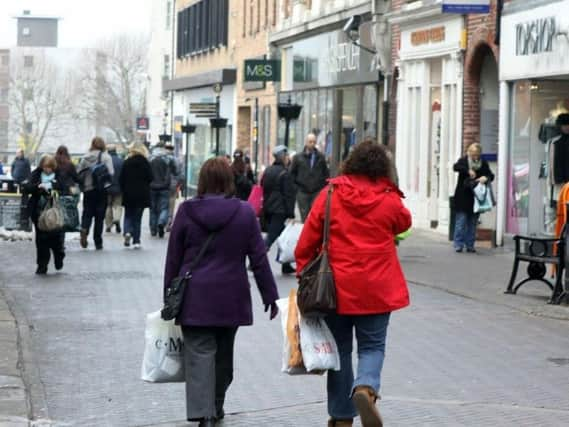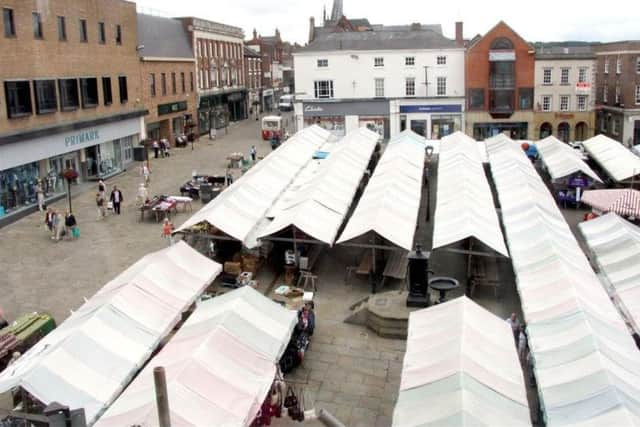SHOPPING SPOTLIGHT: Ten shops open in Chesterfield in one year - as nine close


New data revealing shop openings and closures across the East Midlands in 2016 show fashion shops, insurance and recruitment agencies and banks are feeling the pinch.
Last year 353 outlets closed across the East Midlands, a rate of almost one a day, compared to 289 openings, equating to a net reduction of 64 shops.
Advertisement
Hide AdAdvertisement
Hide AdBut Chesterfield is bucking the region’s trend with 10 shops opening last year compared to nine closures.


In Derbyshire, only Belper had a higher net increase in stores opening with four extra shops setting up in the town last year.
Dom Stevens, manager of Destination Chesterfield, said: “Chesterfield has a great mix of independent and chain retailers as well as the market, which helps attract both shoppers and visitors to the town.
“This is certainly the case where fashion retailers are concerned; we have had a number open in the last 12 months alone. Of the three newcomers shortlisted in the Best New Store category in the Chesterfield Retail Awards, two are fashion retailers - Blanc Occasions and Style Loft.
Advertisement
Hide AdAdvertisement
Hide Ad“Although we lost BHS from Vicar Lane, it is great to see this prominent space being brought back into use by TJ Hughes further boosting the town’s retail offering. Chesterfield’s leisure experience will also improve further with the redevelopment of the Co-op starting later this year. A number of food and drink business are already taking advantage of this and have opened up in this part of town in anticipation of this.”


Tobacconists, estate agents and food outlets are among the retail chains growing at the fastest rate on East Midlands high streets during 2016, according to research conducted for PwC by the Local Data Company (LDC).
Health clubs, lounge bars and food outlets, including pizza takeaway and Italian restaurants, also thrived last year, as the region’s high streets continue to rebalance from shopping to leisure.
With a net increase of 10, tobacconists were the fastest growing retailer, and, with a net increase of six, there are now 184 estate agents in the region, reflecting the buoyant property market.
Advertisement
Hide AdAdvertisement
Hide AdThe data also reveals that fashion shops, including women’s clothes shops and department stores, have been amongst the hardest hit.
This regional decline mirrors a national trend of fashion retailers and department stores being amongst the hardest hit due to closures of all 164 BHS stores.
Andy Lyon, partner and head of retail at PwC in the Midlands, said: “The research clearly highlights the changing face of town centres - leisure and experience destinations continue to replace traditional high street stalwarts. With the East Midlands economy thriving, as the fastest growing economy outside of London and the South East, there is a growing focus on leisure outlets, filling the void left by clothing shops, department stores and banks.
“Fashion is migrating to online at a faster rate than ever, leading to closures on the high street. 2017 will be a crucial year for retailers; a combination of price inflation on goods and groceries will mean that brand loyalty will play a more significant role than ever.
Advertisement
Hide AdAdvertisement
Hide Ad“With prices on the up and less disposable income available to consumers, retailers will need to be versatile and savvy to increase footfall to their stores. Our Total Retail research shows that almost half (48%) of UK shoppers buy online because they find it more convenient than visiting a shop. In contrast, shoppers continue to place a lot of value on in-store experience, with the number one attribute being shop staff with deep knowledge of their product range.”
The data shows the highest net reduction (-13) was in Derby with 43 closures and 33 openings. Loughborough had the highest net increase of seven, with 17 openings and 10 closures, followed by Belper which had a net increase of four with six openings and two closures.